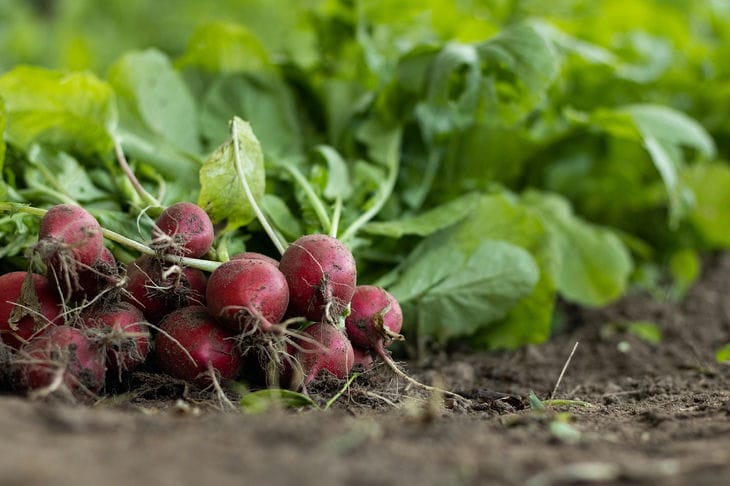A small vegetable with huge benefits: who needs to include radishes in their diet
Radish is the first root vegetable that pleases gardeners in early spring, helps to replenish vitamin deficiency, and decorates dishes.
The article will tell you what exactly the beneficial properties of the culture are, how to use it and who should avoid it.
A little vitamin boost
Bitter, fresh and aromatic, radish is a truly powerful source of vitamins and minerals.
It is estimated that a bunch of radishes can completely cover the daily dose of vitamin C. Not many root vegetables, fruits and vegetables can boast such capabilities.
The specific taste of radish is provided by mustard oils, which act as antiseptics. In addition, the crop is valued by vegetarians for its high protein content. In addition, a whole list of substances was found in the composition, namely:

- enzymes;
- vitamin C;
- potassium, magnesium, phosphorus;
- fats;
- nicotinic acid;
- iron, calcium;
- carbohydrates and essential oils;
- B vitamins.
Benefits of root vegetables for the body
Microelements present in the composition have a beneficial effect on digestion and help improve intestinal peristalsis.
Radish is recommended for people with obesity problems, as vitamin C strengthens cell membranes, increasing their susceptibility to beneficial substances.
The fiber in the root vegetable effectively removes bad cholesterol from the body, which accumulates and coats the blood vessels, causing strokes.
The vegetable can be a good preventative against various heart pathologies. It is worth noting that radish and daikon have similar beneficial properties.
Recent studies of the root vegetable have shown that the natural coloring pigment of radish is an effective anti-tumor prophylaxis.
However, regularity is important in this matter. In addition to this ability, the substance from the pigment has the property of strengthening the immune system and calming the central nervous system.
Potential damage caused by root crops
It should not be forgotten that radish, like any other plant product, can cause individual intolerance, accompanied by an acute allergic reaction. In this case, its use should be completely excluded.
The composition of radish and its taste can be dangerous for people with problems with the pancreas, stomach and intestines, as well as the liver and gall bladder. No less dangerous can be the use in chronic diseases of the thyroid gland. For example, in the presence of goiter.
Culinary uses
Radish is used in cooking to decorate dishes and enhance their taste. As a rule, it is most often added as an ingredient to fresh vegetable salads.
Experienced chefs recommend using both the root vegetables themselves and the young, juicy tops.
Radish in dishes stimulates the production of gastric juice, can increase appetite. The vegetable is not subject to heat treatment, as it loses its properties.
Bright, aromatic and unique in its composition, radish must be in a person’s diet if he does not have significant contraindications to consumption.
Earlier we talked about how to remove dark circles under the eyes .
